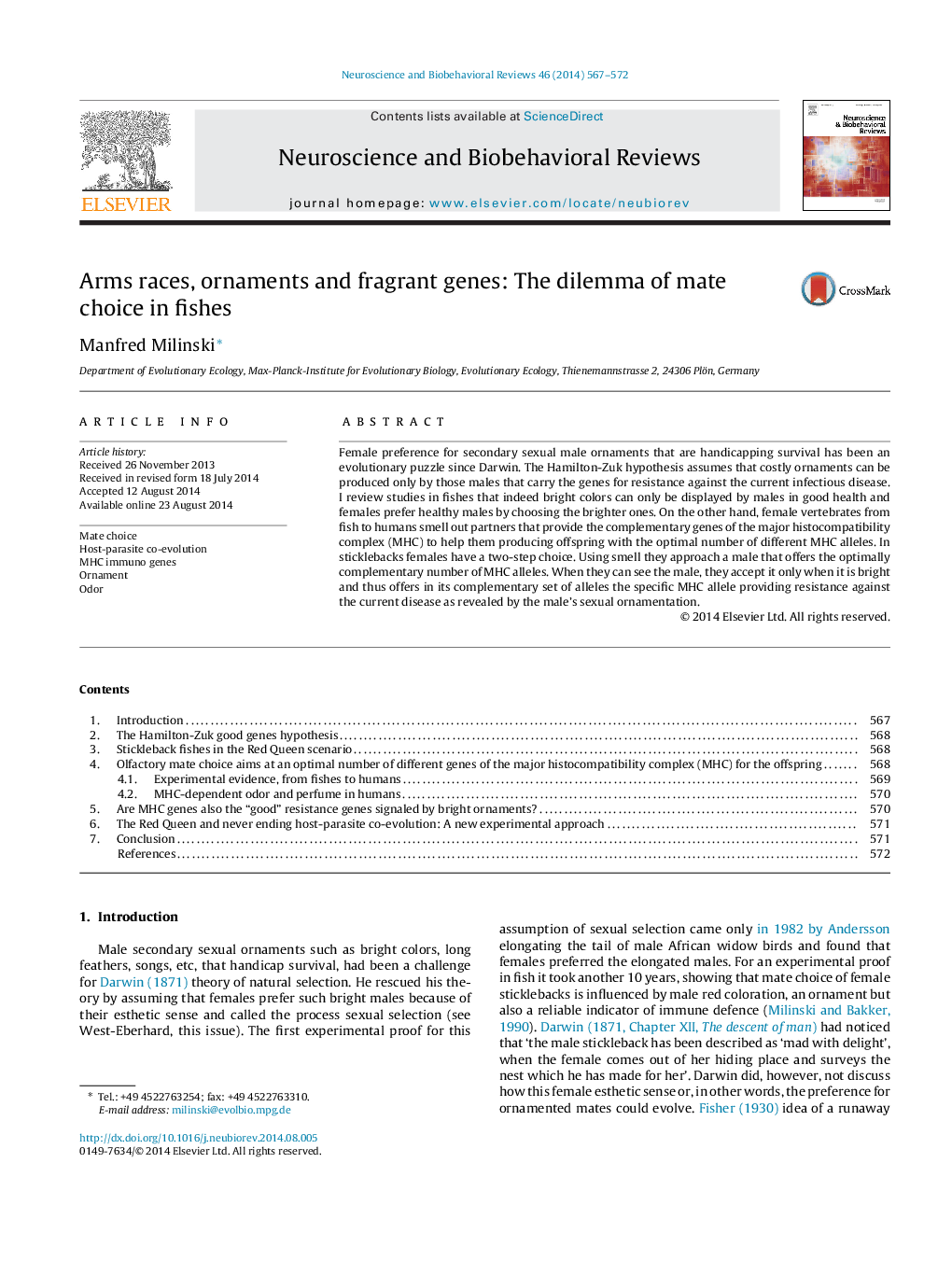| کد مقاله | کد نشریه | سال انتشار | مقاله انگلیسی | نسخه تمام متن |
|---|---|---|---|---|
| 937444 | 924485 | 2014 | 6 صفحه PDF | دانلود رایگان |
• Mate choice in sticklebacks is part of Red Queen Dynamics.
• Preference using odor signals of a male offering optimally complementary MHC alleles.
• Preferred male must be brightly colored to signal health, thus possessing needed specific MHC alleles.
Female preference for secondary sexual male ornaments that are handicapping survival has been an evolutionary puzzle since Darwin. The Hamilton-Zuk hypothesis assumes that costly ornaments can be produced only by those males that carry the genes for resistance against the current infectious disease. I review studies in fishes that indeed bright colors can only be displayed by males in good health and females prefer healthy males by choosing the brighter ones. On the other hand, female vertebrates from fish to humans smell out partners that provide the complementary genes of the major histocompatibility complex (MHC) to help them producing offspring with the optimal number of different MHC alleles. In sticklebacks females have a two-step choice. Using smell they approach a male that offers the optimally complementary number of MHC alleles. When they can see the male, they accept it only when it is bright and thus offers in its complementary set of alleles the specific MHC allele providing resistance against the current disease as revealed by the male's sexual ornamentation.
Journal: Neuroscience & Biobehavioral Reviews - Volume 46, Part 4, October 2014, Pages 567–572
